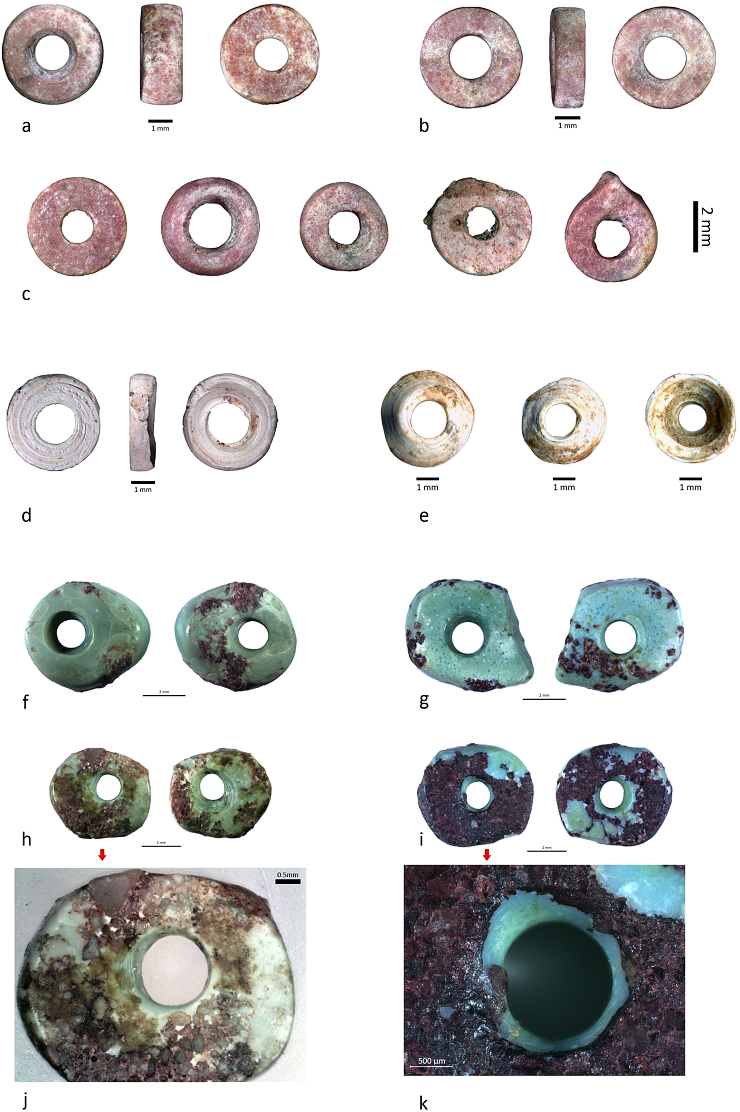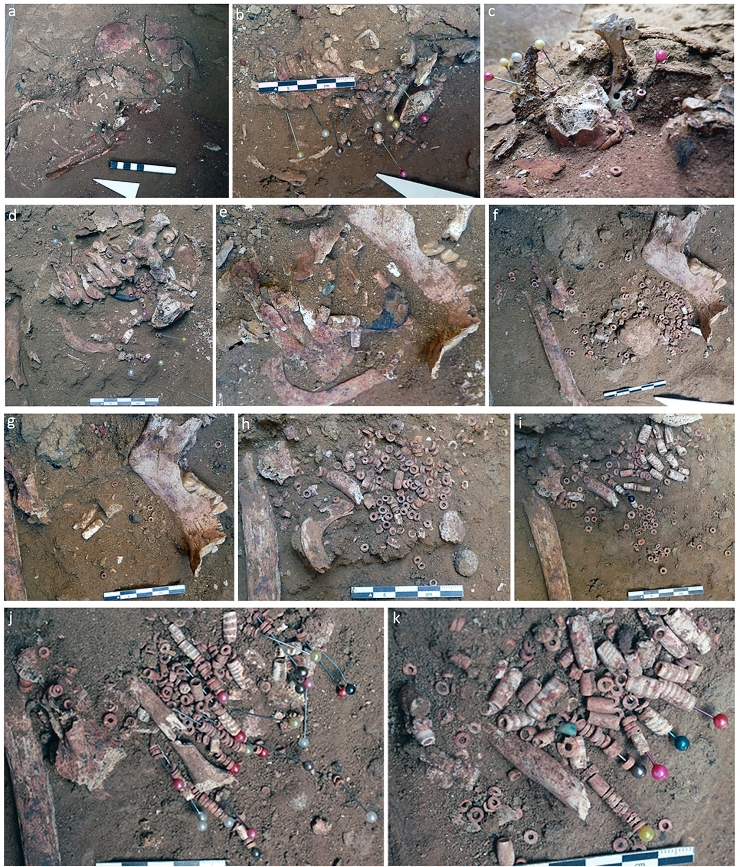
Scientists have reassembled a Neolithic necklace - it's spectacular
Categories: Nálezy nejenom s detektorem na blízkém východě
An artfully crafted necklace made of thousands of beads from a child's grave in the Neolithic village of Ba'ja in southern Jordan has been reassembled into its original shape five years after its discovery. It is the most elaborate ornament ever found at a Neolithic site and contains the oldest known amber beads ever found.
Ba'ja near the rock city of Petra was inhabited between 7,400 and 6,800 BC. It is densely covered with multi-layered stone buildings - houses and granaries. Although the deceased were usually buried outside the dwellings, some were interred in individual double or mass graves beneath the dwellings.
In the summer of 2018, a grave was found under the floor of a stone house with the skeletal remains of an approximately eight-year-old child buried in the fetal position (in the fetal position). The skeleton was in very poor condition, damaged over thousands of years by the weight of the layers above the grave. The sex could not be clearly determined, but from the shape of the chin it was probably a girl. Archaeologists therefore named her Jamila (meaning "beautiful" in Arabic).
The excavation revealed a high concentration of beads of different materials and sizes, mostly clustered around the child's chest and neck. Eventually, 2,500 flat, cylindrical, disc and tube beads were discovered. Most were made of sandstone, others are turquoise, shell or amber beads from Lebanon - the oldest ever discovered.
The concentrations of beads were divided between two large pendants: A pearl ring carved from a single large shell with several perforations was on the chest, and a double-perforated oval hematite pendant on the back of the neck. The mother-of-pearl ring is particularly spectacular, probably imported from the Red Sea more than 1,000 km away.
Some of the beads were still aligned in several rows on the left side (the child was lying on his left side), but the greater part was scattered. The repeated patterns and combinations of bead type and colour in the surviving rows suggested that the beads could not have been scatteredover the body, but it was unclear whether they were originally part of a necklace, a decorated garment, or something else entirely.
The grave was documented in detail, and the concentration and preserved layers allowed researchers to reconstruct the original configuration. The entire assemblage was loaned to research laboratories in Germany and France for cleaning, consolidation, restoration and analysis. Most of the beads found in the first layers, corresponding to the right side of the body, were disturbed due to displacements and damage to the skull and the right side of the skeletal remains.
In order to reliably determine the bead combinations, the archaeological documentation was carefully studied, focusing on the preserved bead positions. Mathematical analyses were also helpful. Wear and intensity of use on the suspension system was also examined. The result of the reconstruction is spectacular - a necklace over 30 cm wide and long in ten bead rows, seven of which were connected to a pearl ring.
Based on several lines of evidence, researchers believe the necklace was created at Ba`ja. Significant portions of the beads were made from exotic shells and stones, including fossil amber, an unprecedented material that has never before been confirmed in this period. The acquisition of such an ornament from life and its dedication to a young deceased girl emphasizes the important social status of this individual.
In addition to its symbolic functions related to identity, archaeologists believe that the necklace played a key role in thein the performance of inhumation rituals, understood as a public event bringing together families, relatives, and people from other villages. In this sense, the necklace is not understood as belonging entirely to the realm of death, but rather to the world of the living, where it materializes collective memory and shared moments of emotion and social cohesion.
Roman Němec
Sources: thehistoryblog.com, journals.plos.org

The Stone Tomb

part of the necklace

shell beads

sample of different bead shapes

beads in situ

reassembled necklace

hematite stone
The article is included in categories:
- Archive of articles > Archaeology > Finds and rescue research abroad > Nálezy nejenom s detektorem na blízkém východě
Post
Je to nádhera a obrovské množství energie a taky zaujetí. Řemeslník do toho dával kus své duše:)
Práce na dlouhe zimní večery 
Je fakt nádhernej!
Čistá krása! 
Všechna čest archeologům - parádní rekonstrukce parádně starého nálezu 











